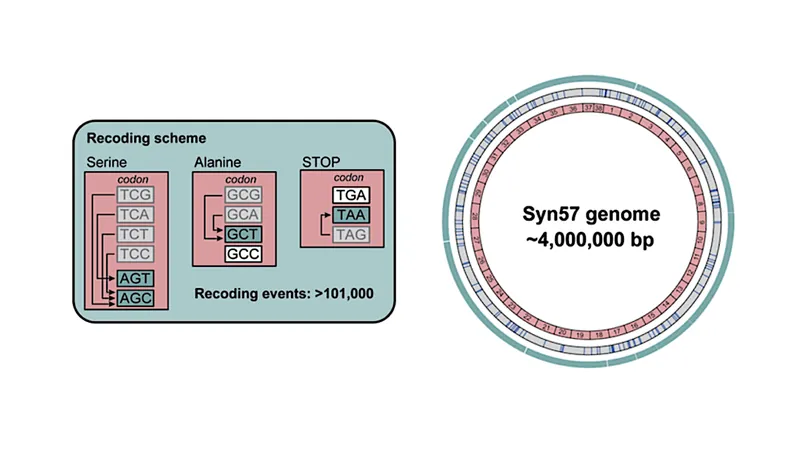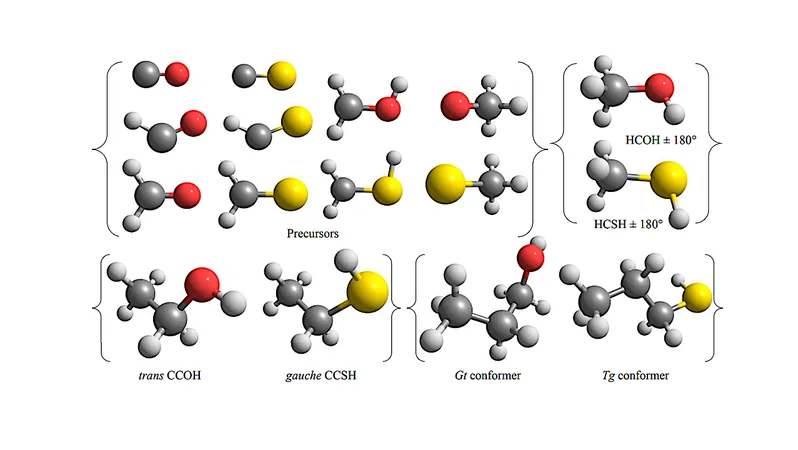
Unlocking the Secrets of MXenes: How AI Could Revolutionize 2D Nanomaterials
2025-09-05
Author: Mei
A Nanomaterial Breakthrough at Drexel University
Since their groundbreaking discovery in 2011, MXenes—a dynamic family of nanomaterials—have been reshaping the landscape of materials science. Known for their extraordinary properties like durability and conductivity, there are now over 50 distinct types of MXenes, thanks to relentless experimentation by thousands of scientists globally. But a recent collaborative revelation led by Yury Gogotsi, PhD, of Drexel University, along with Babak Anasori, PhD, now at Purdue University, is set to turbocharge this effort using artificial intelligence.
The Science of Order and Disorder in MXenes
Their latest study, featured in the journal Science, titled "Order to Disorder Transition Due to Entropy in Layered 2D Carbides," explores the intricate thermodynamics influencing MXenes. This research highlights how atomic arrangement, dictated by thermodynamic forces, plays a crucial role in the unique characteristics of these materials. Understanding how enthalpy and entropy interact in MXenes could open new avenues in tailored material design.
Experimentation Leading to Innovation
Creating MXenes has been a meticulous process, involving years of testing and refining new materials. The incredible versatility of MXenes comes from their layered atomic structures; even tiny changes can yield materials with drastically different properties. The journey has been slow but steady, as researchers inch closer to unlocking the full potential of these promising nanomaterials.
AI: The Future of Materials Discovery
Gogotsi believes this breakthrough is a turning point that will guide future explorations and leverage cutting-edge AI technologies for enhanced material discovery. According to Anasori, AI is poised to revolutionize materials science by streamlining the development of bespoke materials tailored to specific technological needs. "This work opens new avenues in the atomistic design of materials," he states, emphasizing the crucial role of computational science in navigating the vast universe of potential MXenes.
Revolutionizing Predictions with Advanced AI
While researchers have applied machine learning for decades, recent advances in microchip technology are stepping up AI's predictive capabilities across the chemistry landscape. However, the true potential of AI in this domain remains untapped, largely due to insufficient understanding of the new materials' chemical behaviors.
Key Discoveries About Atomic Structure
In this research, the team synthesized and analyzed 40 MXenes, including 30 brand new varieties, to measure how different metal combinations influence atomic arrangements. The findings revealed that materials with fewer metal types maintain a structured order, while those with more elements demonstrated more chaotic mixing—an important insight into the thermodynamic forces at play.
Expanding the Horizons of Material Applications
These revelations not only enhance our understanding of MXenes but also expand their potential applications. As Brian Wyatt, PhD, points out, the study underscores the delicate balance between entropy and enthalpy in defining the properties of high-entropy materials. With AI's help, researchers hope to pave the way for developing MXenes and their parent materials with optimized atomic structures.
Paving the Way for Future Technologies
Anasori envisions a future where these new materials can thrive in extreme conditions—transforming technologies such as clean energy solutions and advancements in electric vehicle performance. "Our goal is to create materials that outperform existing technologies in demanding environments," he asserts.
A Collaborative Effort for Progress
This innovative research received backing from multiple esteemed institutions, including the National Science Foundation and the U.S. Department of Energy. It exemplifies how collaboration can lead to major scientific advancements, charting a path for the next generation of nanomaterials that could revolutionize various industries.




 Brasil (PT)
Brasil (PT)
 Canada (EN)
Canada (EN)
 Chile (ES)
Chile (ES)
 Česko (CS)
Česko (CS)
 대한민국 (KO)
대한민국 (KO)
 España (ES)
España (ES)
 France (FR)
France (FR)
 Hong Kong (EN)
Hong Kong (EN)
 Italia (IT)
Italia (IT)
 日本 (JA)
日本 (JA)
 Magyarország (HU)
Magyarország (HU)
 Norge (NO)
Norge (NO)
 Polska (PL)
Polska (PL)
 Schweiz (DE)
Schweiz (DE)
 Singapore (EN)
Singapore (EN)
 Sverige (SV)
Sverige (SV)
 Suomi (FI)
Suomi (FI)
 Türkiye (TR)
Türkiye (TR)
 الإمارات العربية المتحدة (AR)
الإمارات العربية المتحدة (AR)